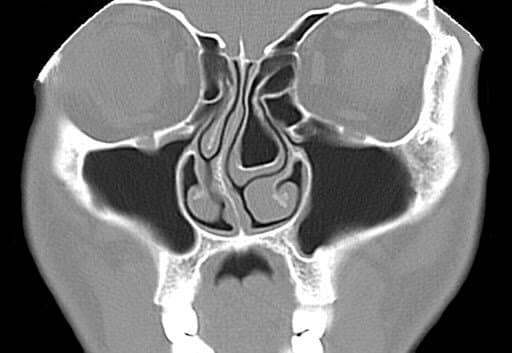Impact of Air Pollution on Sinus Infection Recovery: Key Effects and Solutions
Sinus infections can cause significant discomfort on their own—but for many, recovering from sinusitis becomes even more challenging when outdoor air quality is poor. If you’ve noticed your sinus symptoms lingering longer on smoggy days or worsening noticeably during times of elevated local pollution, there’s a clear scientific explanation behind it. The impact of air pollution on sinus infection recovery is increasingly recognized by healthcare professionals and supported by emerging research. In this article, we’ll explore why polluted air makes healing tougher, how specific pollutants affect your sinuses, and most importantly, what practical steps you can take to create a supportive environment for your respiratory health.
Understanding Sinus Infections and the Recovery Process
Sinus infections, medically termed sinusitis, occur when the cavities around your nasal passages become inflamed or infected. This condition causes familiar symptoms such as facial pressure, nasal congestion, headaches, postnasal drip, and sometimes changes in your sense of smell. While most sinus infections are viral and tend to resolve within one to two weeks, some cases linger much longer—especially when environmental irritants continue to affect the sinuses.
The recovery process primarily involves reducing inflammation, restoring normal sinus drainage, and clearing the infection. However, healing times can be significantly prolonged when ongoing irritants persistently aggravate the sensitive sinus tissue. Imagine trying to heal a scrape on your skin while continuously exposing it to dirt and friction—similarly, constant exposure to pollutants can delay your sinuses’ return to normal function.
Understanding the basics of sinus infections helps you appreciate how environmental factors can influence recovery.
Why Environmental Factors Matter – Focus on Air Pollution
Your surrounding environment plays a pivotal role in both your sinus health and how well you recover from infections. While allergens, temperature shifts, and humidity changes all influence how your sinuses feel, air pollution has emerged as a particularly important—and often underestimated—factor.
Poor air quality doesn’t just trigger sinus symptoms temporarily; it can fundamentally alter how your sinuses heal after an infection. Today, many otolaryngologists (ENT specialists) and respiratory health experts emphasize the role of air pollution in sinus recovery. Understanding this connection is crucial for anyone looking to minimize flare-ups and promote long-term nasal wellness.
Environmental quality directly impacts the healing environment within your sinuses.
How Air Pollution Affects Sinus Health
Common Air Pollutants That Impact Sinuses
Particulate Matter (PM2.5) — Small Particles, Big Problems
PM2.5 refers to tiny airborne particles less than 2.5 microns in diameter—roughly 30 times smaller than the width of a human hair. These particles originate predominantly from vehicle exhaust, power plants, wildfires, and industrial processes. Due to their minuscule size, PM2.5 particles can penetrate deep into the respiratory tract, reaching the delicate mucosal lining within the sinuses.
Scientific studies have shown a strong correlation (association) between high PM2.5 levels and increased rates and severity of sinus infections[1][2]. For instance, during times of heavy traffic or wildfire smoke, patients report worsened symptoms, demonstrating how these microscopic invaders can exacerbate sinus inflammation.
Ground-Level Ozone (O3) and Other Pollutants
Ground-level ozone forms when nitrogen oxides and volatile organic compounds react in sunlight, especially on hot days. Ozone is a potent respiratory irritant known to aggravate nasal and sinus tissues. Other pollutants such as nitrogen dioxide (NO2) and sulfur dioxide (SO2), emitted from fossil fuel combustion, also contribute to nasal irritation and heightened sinus sensitivity.
These pollutants often act together—their combined presence amplifies inflammation in sinus tissue, making symptoms feel more intense and recovery slower. Imagine your sinuses as a sensitive garden: pollutants like ozone and PM2.5 are persistent pests that not only damage plants but also disrupt the soil, preventing healthy regrowth.
The Science Behind Pollution and Sinus Inflammation
When you breathe in polluted air, particulate matter and gaseous irritants interact directly with the lining of your nasal passages and sinuses. The body’s natural response to this irritation is inflammation, characterized by swelling, increased mucus production, and narrowing or blockage of sinus drainage pathways.
Histopathological studies—examining tissue samples under the microscope—show that exposure to air pollution leads to accumulation of inflammatory cells and structural remodeling of sinus tissues[1][2]. This means pollution does far more than just trigger symptoms—it physically changes the sinus environment, creating chronic inflammation that is resistant to healing.
This response can be especially problematic for patients recovering from sinus infections because it prolongs edema and mucus buildup, thereby impeding normal sinus drainage and resolution of infection.
Long-Term Effects: From Acute Sinus Infection to Chronic Rhinosinusitis
Prolonged exposure to polluted air doesn’t just worsen a single sinus infection; it can contribute to the transition from acute sinusitis to chronic rhinosinusitis (CRS). CRS is defined as persistent inflammation of the sinuses lasting more than 12 weeks and is often difficult to treat.
Studies indicate that communities with chronically elevated air pollution experience higher incidences of CRS, with symptoms worsening in spring and summer months when ozone and PM2.5 pollution spike[3]. Chronic exposure can degrade the immune defenses of sinus tissue, increase mucus gland size, and lead to permanent changes such as polyps or thickened mucosa.
In practical terms, ongoing pollution exposure creates a vicious cycle where repeated sinus infections and inflammation increase in frequency and severity, substantially impacting quality of life.
Air pollution can contribute to both immediate symptom severity and long-term sinus health problems.
Consequences for Sinus Infection Recovery
How Air Pollution Prolongs Sinus Infection Symptoms
Even after the infection-causing bacteria or viruses are cleared, pollutants maintain a hostile environment that hinders normal healing. The irritants continue provoking inflammation, meaning your swollen sinus tissues struggle to return to baseline.
This ongoing irritation often results in:
- Prolonged nasal congestion and facial fullness—pressure and blockage last well beyond typical recovery time.
- More intense discomfort or facial pain—inflammation and swelling sensitize nerve endings.
- Delayed improvement in sinus drainage and mucus reduction—which can allow secondary infections or flare-ups to develop.
Patients often report that during high pollution days or wildfire smoke episodes, their sinus symptoms worsen or fail to improve despite usual treatment efforts. This highlights the tangible effect air pollution has on their recovery timeline.
Risks of Complications and Recurrence
Beyond slowing initial recovery, air pollution increases risks of complications, including:
- Development of chronic sinusitis, which may require longer or more intensive medical management.
- Higher likelihood of sinus infection recurrence due to compromised local immunity.
- Susceptibility to nasal polyps and tissue remodeling—changes that often require surgical intervention.
Pollutants can irritate and may weaken the natural defenses of the sinus mucosa, potentially leaving the sinuses more vulnerable to opportunistic infections by bacteria, fungi, and viruses that might otherwise be cleared by a healthy immune system.
Prolonged exposure to poor air quality can make sinus infections more persistent and harder to fully resolve.
Effective Solutions to Mitigate the Impact of Air Pollution on Sinus Recovery
While no one can fully control outdoor air quality, several practical strategies can help reduce exposure and support faster sinus healing.
Reducing Exposure to Polluted Air
Using Masks (e.g., N95) to Filter Harmful Particles
On days when air quality is poor, wearing a high-filtration mask such as an N95 can dramatically reduce inhalation of PM2.5 particles and other airborne irritants. People living in urban areas with heavy traffic or those exposed to wildfire smoke often find masks particularly useful.
Many health professionals recommend N95 masks especially for vulnerable populations such as sinus sufferers, children, and those with respiratory illnesses. Wearing an N95 mask when walking outside or commuting can help protect your sinuses during high pollution episodes—especially if the mask fits snugly around your face.
Benefits of High-Quality Air Purifiers at Home and Workplace
Indoor air quality can be significantly improved with HEPA-filter air purifiers, which trap fine particles including PM2.5, dust, pollen, and smoke. Using these devices in living and working spaces reduces overall exposure to irritants and helps manage symptoms.
Sinus care clinics observe faster improvements when patients implement air purifiers in bedrooms and home offices. Selecting an air purifier suited to your room size is important; larger homes may require multiple units.
We discuss this further in our blog: Best Air Purifiers for Sinus Sufferers[4].
Monitoring Local Air Quality and Limiting Outdoor Activities When Pollution Is High
Most weather or environmental apps, such as the EPA’s AirNow, feature an Air Quality Index (AQI) that indicates pollution levels for your area. On days when PM2.5 or ozone concentrations are high, try to stay indoors, postpone errands, or exercise indoors rather than outdoors.
Patients who track AQI and adjust their activities accordingly report fewer symptom flare-ups and more predictable recovery periods.
Medical and Home Care Strategies to Support Sinus Healing
Nasal Irrigation (Saline Rinses) to Clear Pollutants and Allergens
Rinsing your nasal passages with saline solution helps physically flush out mucus, pollutants, and allergens accumulated after outdoor exposure. This gentle, safe practice facilitates sinus drainage and reduces the irritant load.
Many patients find daily nasal irrigation a simple yet powerful tool during sinus infection recovery—especially when air quality is compromised.
Use of Steroid Nasal Sprays to Reduce Sinus Inflammation
Under healthcare provider guidance, steroid nasal sprays can decrease inflammation, ease swelling, and promote sinus drainage after pollutant exposure[5]. These sprays are particularly helpful when persistent inflammation threatens to prolong infection symptoms.
Always use steroid nasal sprays under medical advice to ensure proper dosing and avoid potential side effects. For more on nasal sprays, see: Best Nasal Spray for Sinusitis: Steroid vs Saline vs Decongestant.
When to See an ENT Specialist for Persistent or Severe Symptoms
If your sinus infection symptoms last beyond 10 days, worsen, or if you experience recurrent infections despite self-care, it’s important to consult an ENT specialist. They can evaluate for complications, offer advanced treatments, and guide you through complex recovery.
Lifestyle Adjustments to Improve Overall Respiratory Wellness
Staying Hydrated to Keep Sinus Passages Moist
Adequate hydration thins mucus secretions and facilitates easier sinus drainage and removal of pollutants. Drinking water regularly throughout the day supports natural cleansing mechanisms.
Humidifiers vs Dry Air: Which Is Better for Sinus Health?
Balanced indoor humidity (ideally 40-60%) helps maintain mucosal moisture, preventing crusting and irritation caused by dry air. Using a humidifier during dry winter months or in air-conditioned environments reduces nasal irritation and supports healing.
Learn more about humidifiers and ENT health here: Why Humidifiers Help ENT Conditions.
Avoiding Additional Irritants Like Smoking and Strong Scents
Avoid exposure to tobacco smoke, harsh perfumes, cleaning chemicals, and other irritants that can worsen sinus inflammation. Many sinus sufferers report symptom improvement after reducing these exposures.
Further tips on avoiding irritants are available: Avoiding Irritants That Trigger Sinus Flare-Ups.
Diet and Stress Management Tips for Supporting Immune Function and Recovery
Eating a balanced diet rich in antioxidants (found in fruits and vegetables), ensuring sufficient sleep, and managing stress through meditation or gentle exercise support your immune system. A strong immune system helps fight infections faster and reduces the chance of complicated sinusitis, especially when environmental pollutants add extra stress.
FAQs about Air Pollution and Sinus Recovery
Can air pollution cause sinus infections?
Air pollution does not directly cause sinus infections but can weaken your nasal defenses, increase inflammation, and make you more susceptible to infections.
How can I protect my sinuses during high pollution days?
Limit outdoor activities, wear a properly fitted N95 mask when outside, use an air purifier indoors, and perform saline nasal irrigation after exposure to polluted air.
Are air purifiers really effective for sinus health?
Yes. HEPA filters effectively trap PM2.5 and other irritating particles, reducing indoor exposure and supporting sinus recovery.
When should I seek medical treatment for sinus infection worsened by pollution?
If symptoms persist beyond 10 days, worsen, are severe, or if you experience recurrent infections, consult an ENT specialist. See: When Should I See An ENT?.
Does air pollution affect children differently in terms of sinus health?
Yes. Children’s airways are smaller and more sensitive, so even moderate pollution levels can significantly impact their sinus and respiratory health.
Key Takeaways on Air Pollution’s Impact on Sinus Recovery
- Air pollution aggravates inflammation and can significantly delay recovery from sinus infections.
- Pollutants like PM2.5 and ozone irritate sinus tissues and contribute to chronic sinus problems when exposure continues over time.
- Practical strategies—including limiting exposure, improving indoor air quality, nasal care, and healthy lifestyle habits—support faster recovery and reduce complications.
Managing your environment is crucial to support your sinus health and recovery from infection.
Encouragement to Manage Your Environment for Better Sinus Health
Though you cannot control outdoor air quality, you have many powerful tools to minimize pollution’s impact on your sinus recovery. Simple steps such as wearing a well-fitting N95 mask during high pollution days, running a HEPA air purifier at home, practicing regular nasal irrigation, and choosing a healthy lifestyle can make your healing process smoother and reduce your risk of chronic sinus problems.
Don’t hesitate to reach out to specialists who understand pollution-related sinus issues and can guide you through persistent or severe symptoms.
Remember: caring for your sinuses isn’t just about alleviating symptoms—it’s about creating a healthier internal environment for long-term relief and overall well-being.
If you’re struggling with sinus infections affected by air quality, consider booking an appointment with the Sleep and Sinus Centers of Georgia. Our experts are here to help customize a treatment and environmental management plan tailored to your needs.
Related reading from Sleep and Sinus Centers of Georgia:
- When Should I See An ENT?
- Why Humidifiers Help ENT Conditions
- Avoiding Irritants That Trigger Sinus Flare-Ups
Citations
- Johns Hopkins Medicine, 2018. Air pollution’s link to chronic sinusitis. https://www.hopkinsmedicine.org/news/articles/2018/04/air-pollutions-link--to-chronic-sinusitis
- Environmental Health, 2022. Air pollution and chronic rhinosinusitis severity. https://ehjournal.biomedcentral.com/articles/10.1186/s12940-022-00948-7
- My Vanderbilt Health, 2024. How air pollution is related to chronic sinusitis. https://my.vanderbilthealth.com/how-air-pollution-is-related-to-chronic-sinusitis
- Sleep and Sinus Centers Blog, Best Air Purifiers for Sinus Sufferers. https://sleepandsinuscenters.com/blog/best-air-purifiers-for-sinus-sufferers
- Sleep and Sinus Centers Blog, Best Nasal Spray for Sinusitis: Steroid vs Saline vs Decongestant. https://sleepandsinuscenters.com/blog/best-nasal-spray-for-sinusitis-steroid-vs-saline-vs-decongestant
This article is for educational purposes only and is not medical advice. Please consult a qualified healthcare provider for diagnosis and treatment.
Don’t let allergies slow you down. Schedule a comprehensive ENT and allergy evaluation at Sleep and Sinus Centers of Georgia. We’re here to find your triggers and guide you toward lasting relief.





